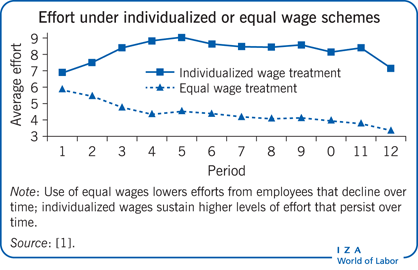Elevator pitch
Can a company attract a different type of employee by changing its compensation scheme? Is it sufficient to pay more to increase employees’ motivation? Should a firm provide evaluation feedback to employees based on their absolute or their relative performance? Laboratory experiments can help address these questions by identifying the causal impact of variations in personnel policy on employees’ productivity and mobility. Although they are collected in an artificial environment, the qualitative external validity of findings from the lab is now well recognized.
Key findings
Pros
The laboratory offers a cheap and reliable method to identify causal relationships between incentives and effort, with a high qualitative external validity.
The anticipated impact of a change in compensation policies on employees’ effort and sorting can be identified in the laboratory.
Lab experiments can determine how reference points in terms of fair wage, comparison income, expectations, and goals influence the intensity of effort.
The importance of simultaneously studying the monetary and non-monetary sources of motivation to better understand how they interact can be demonstrated in a laboratory context.
The laboratory provides clean measures of peer effects on productivity and information on optimal performance feedback policies.
Cons
Subjects are observed only during a brief period of time; it is thus difficult to design lab experiments that are able to capture the long-term effects of a change.
Subjects participating in lab experiments self-select and may feel scrutinized, with consequences on their behavior.
Students and CEOs very probably have a number of different and important characteristics, but it is difficult to involve CEOs in lab experiments.
